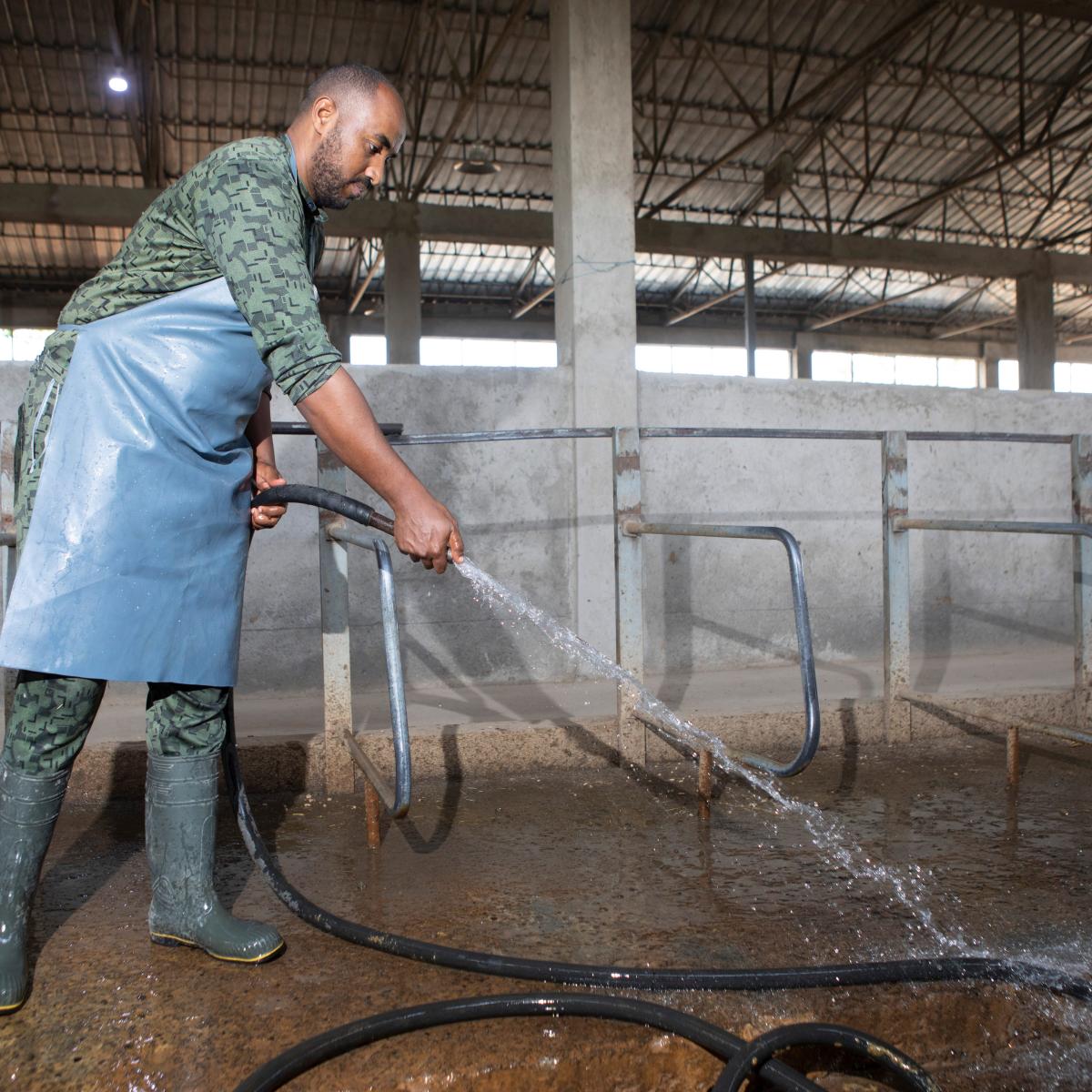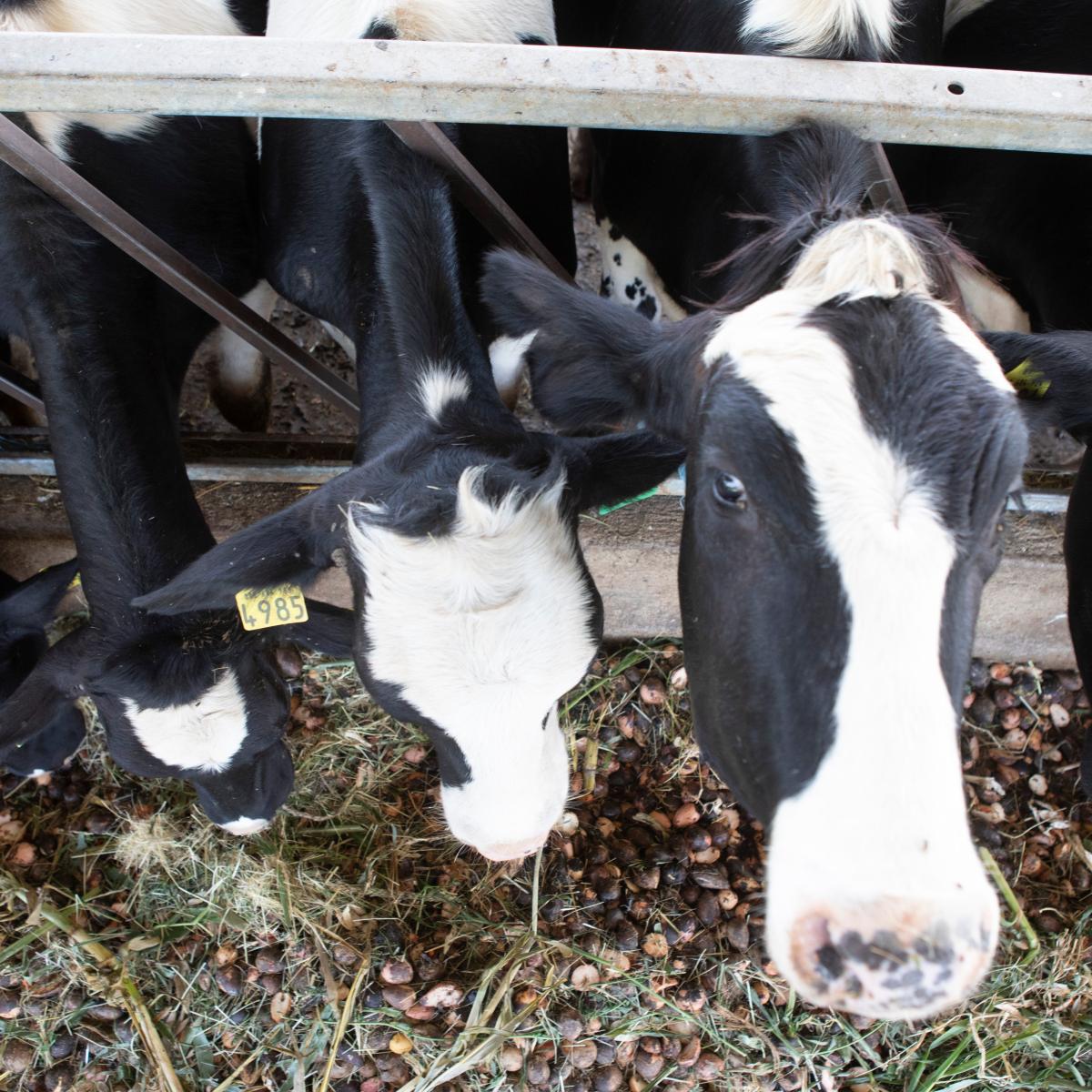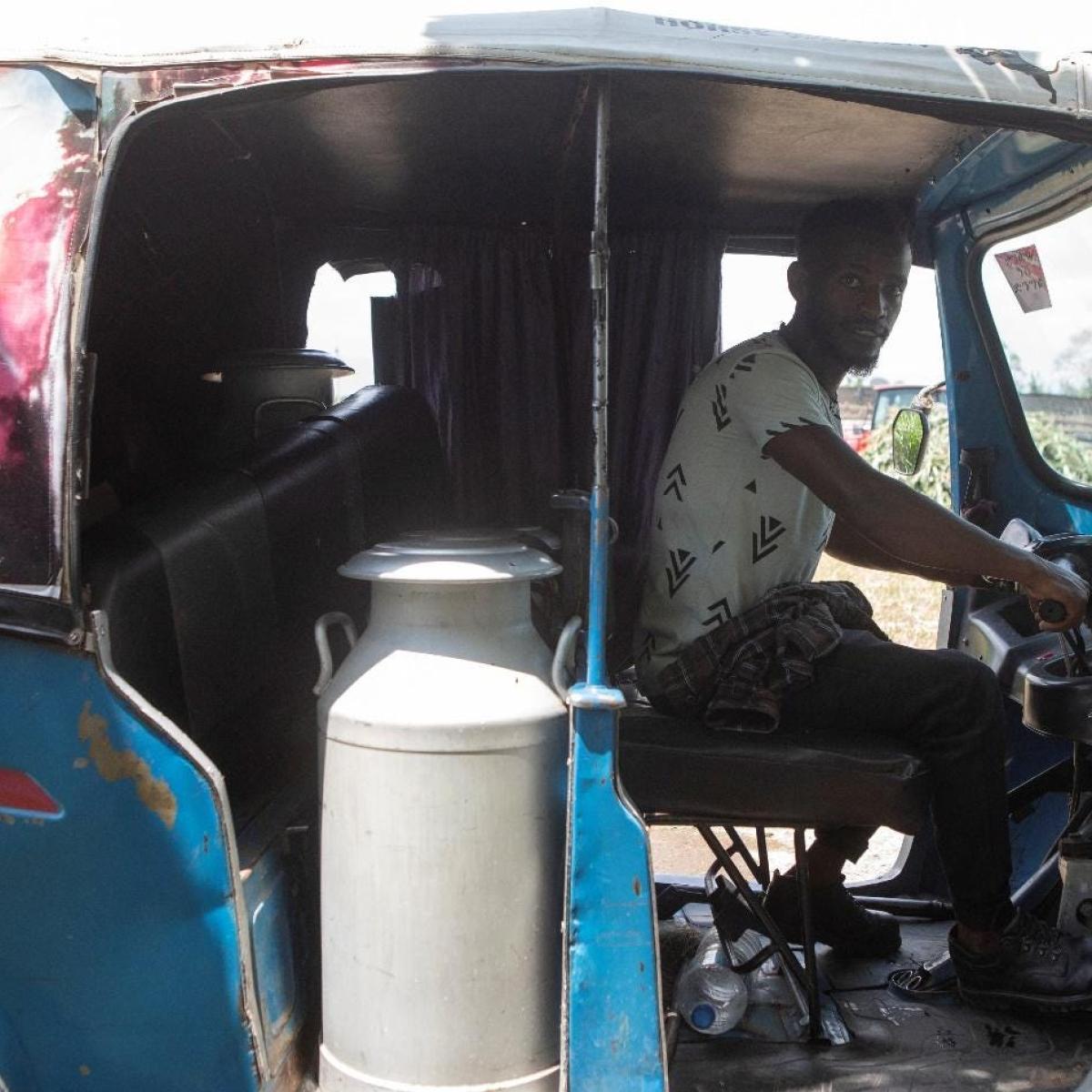Boosting Ethiopia’s Dairy Farms
New technology leads to improved productivity in Hawassa
Entrepreneur Eskender Yoseph poses with a few of his dairy cows as they eat high-protein alfalfa, grown and cut on the farm. / Zacharias Abubeker for USAID
Lake Hawassa, 300 kilometers south of Addis Ababa, is known for hippos, large fish markets, marabou storks, and dairy farms.
Fertile soil and a temperate climate make it an ideal setting for raising cattle and growing their feed. Still, small-scale farmers face challenges producing a consistent supply of safe milk, getting their milk to the market, or generating adequate volumes to make a profit. USAID is working to upgrade farmers’ access to technology to address many of these challenges.
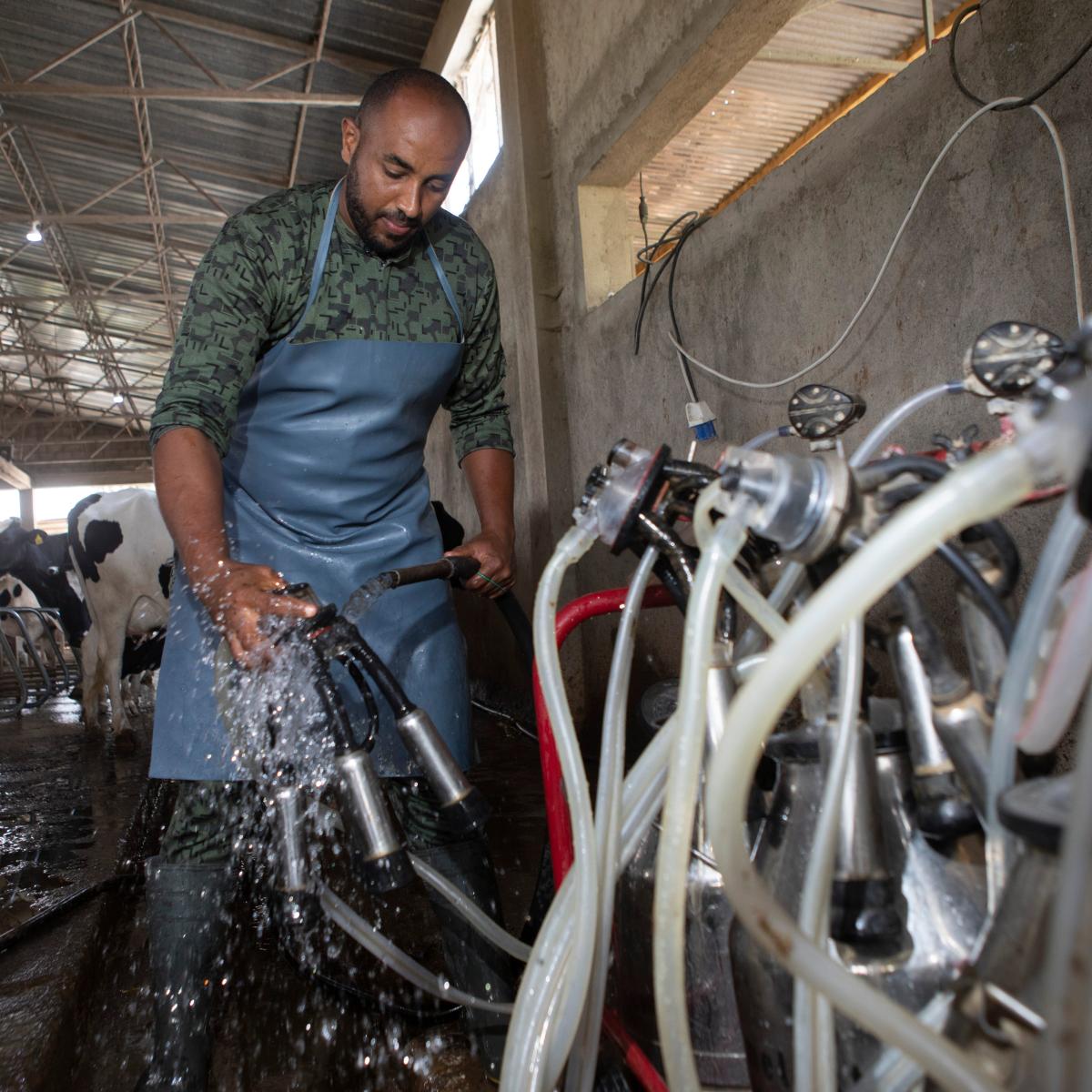
Eskender cleans out the area where cows are milked, and adjusts the pipes on an automated milking machine, donated by USAID. / Zacharias Abubeker for USAID
In 2018, working through the Value Chain Activity, USAID visited many Hawassa farms searching for farmers willing to take on training and technology leadership roles. Entrepreneur Eskender Yoseph was willing to pilot new tools at his farm, Anan Dairy, and share the learning with other farmers.
Today, the farm has 40 milking cows, 20 dry cows, 20 heifers, and 25 calves, producing about 1,000 liters of milk per day.
Eskender’s passion for dairy farming is matched by his passion for social media. He is self-taught, searching through YouTube videos to learn about cattle raising.
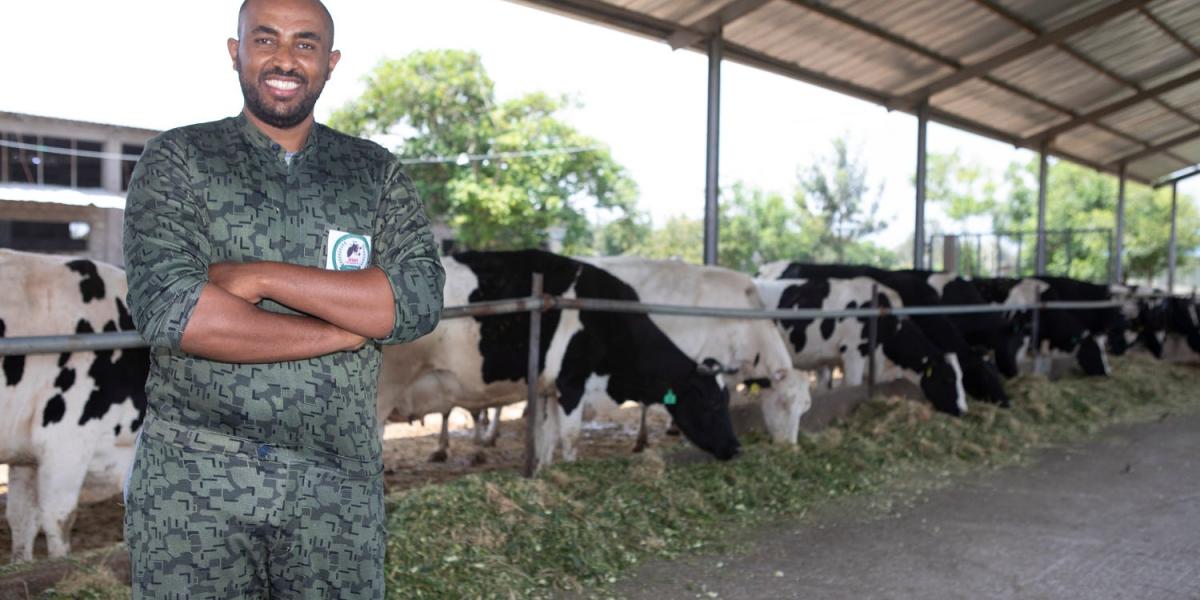
Nearly 3 million people have viewed Eskender’s videos about dairy farming on YouTube and Telegram. / Zacharias Abubeker for USAID
“[The farmers on YouTube]…really care about quality in terms of what they are feeding cows, breeding, and preservation,” he said.
Inspired by what he saw, Eskender started making his own videos about dairy farming and posting them. Eskender has engaged 84,000 followers on TikTok and 272.2 million people have viewed his videos (on YouTube and Telegram).
Increasing productivity
In 2021, USAID provided Eskender with two portable milking machines, which increased his productivity. He invited local farmers to showcase how the machines worked. USAID then donated these machines to 31 farmers in the Oromia, Amhara, and SNNP regions. In addition to ensuring safe and hygienic milk, the machines reduced milking time from 10 to three minutes.
Left: Mealtime for the cows. Right: This chopping machine, donated by USAID, reduces feed waste and makes feed easier for cows to chew and digest. Eskender now builds and sells his own feed chopping machines to Hawassa farmers. / Zacharias Abubeker for USAID
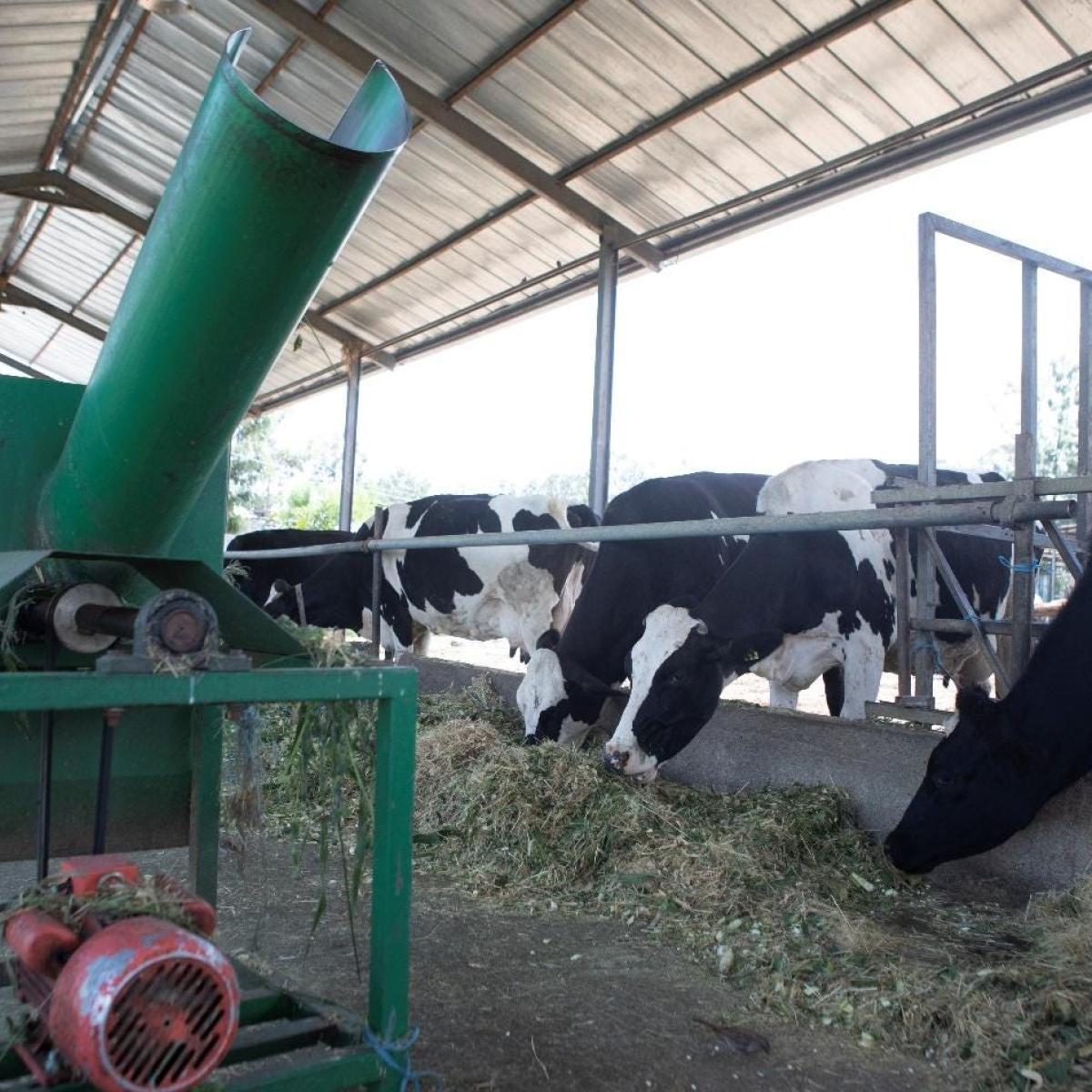
Better cattle feed
USAID also provided 39 farmers, including Eskender, with chopping machines in the same three regions. He uses the chopping machine for the alfalfa he grows, a high-protein crop for optimal milk production. Chopping alfalfa into smaller pieces makes it easier for cows to chew and digest, reducing waste. Eskender soon figured out how to build his own, which USAID purchased to sell to other farmers.
As a self-starter, Eskender is a valuable partner. His vision is to become the largest dairy farmer in Ethiopia — and possibly the entire continent.
By tapping Eskender’s ingenuity, USAID is able to reach other small-scale Hawassa farmers. For each technological support USAID provides, Eskender maximizes its potential. He currently employs 55 employees working in milk processing, dairy farming, and administration functions like distribution, sales, and finance.

Left: Tiled wall marks the entrance to Anan Dairy Farm. Right: A square pit holds the ‘biogas digester’, where dung is mixed with water and cattle urine. / Zacharias Abubeker for USAID
Biogas and organic fertilizer
And through another USAID program, Eskendar is also dabbling in the organic fertilizer business, a product he could sell to local farmers.
Eskender collects cows’ waste into a ‘biogas digester.’ In a giant pit, fresh dung is mixed with water and cattle urine from 100 cows. The resulting biogas is stored and connected to a biogas generator, producing electric power for his machines.
Eskender’s farm-produced bio-slurry is sold as organic fertilizer to nearby farmers, which allows them access to local, organic fertilizer instead of chemical fertilizers.
“Within 10 kilometers, there are more than 1,000 farmers (who need fertilizer). We want to supply fertilizer for them, in conjunction with USAID,” says Eskender. The organic agriculture profits can contribute to local food security through increasing family farm incomes.
Left: A young Ethiopian driver, one of the farm workers, sits at the wheel a ‘tuk-tuk’ — a covered three-wheeled vehicle with a motorcycle engine — ready to deliver the milk to be processed. Right: The farm manager faces a row of cows as they are milked. / Zacharias Abubeker for USAID
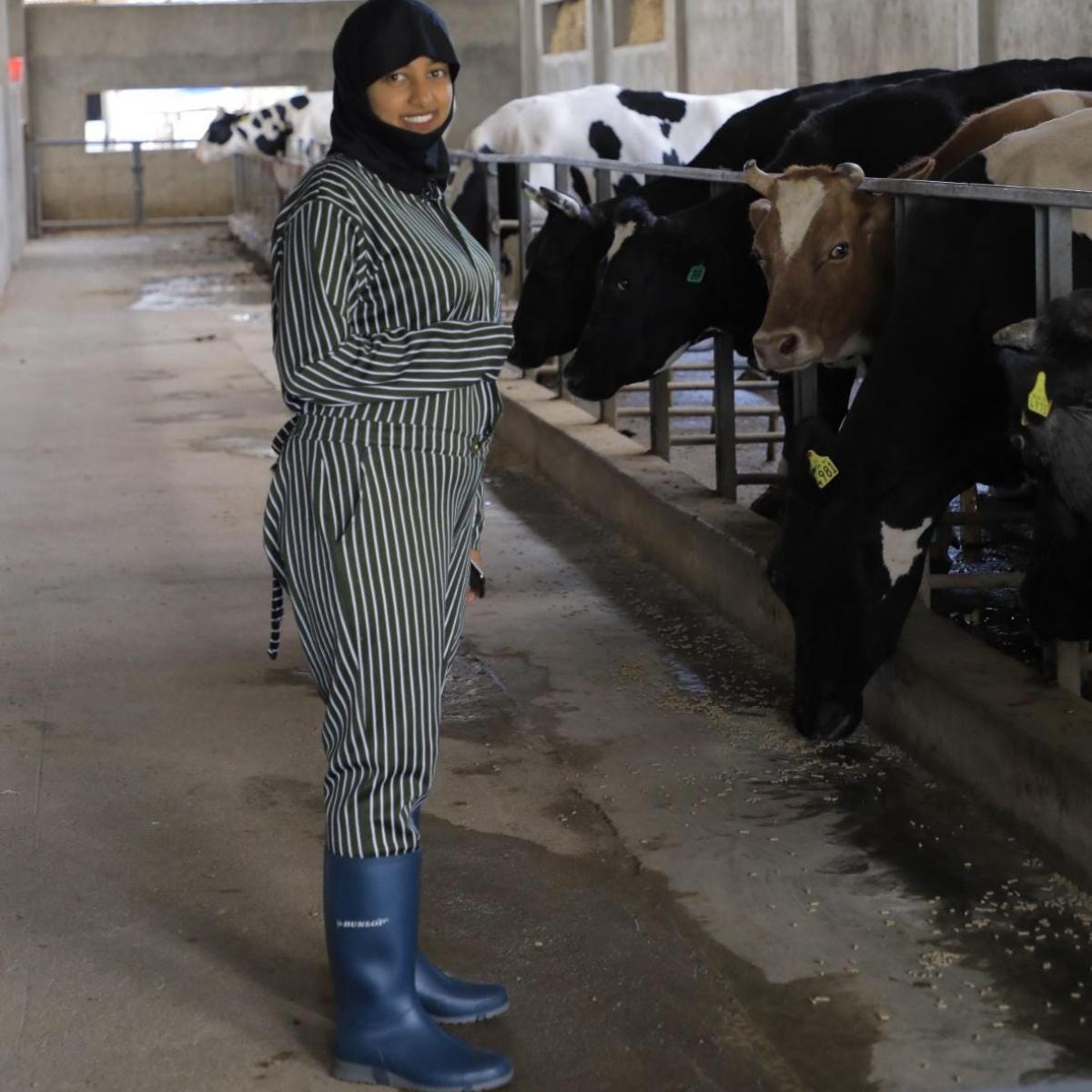
Training and skills transfer
Eskinder also trains young farmers from across the country on cattle management, feed management, and breeding, among other practices.
In 2023, he trained over 70 young farmers from Bahir Dar, Addis Ababa, and other nearby cities. Of course, he reaches them through social media, which he uses to amplify improved dairy farming practices among youth.
“The biggest challenge ahead is keeping up with farming technology. We need a lot of innovation to keep pace and maintain the quality of our farm products,” Eskinder says.
About the Author
Tej Rae is a Development Outreach & Communications Specialist at USAID’s Mission in Ethiopia.


